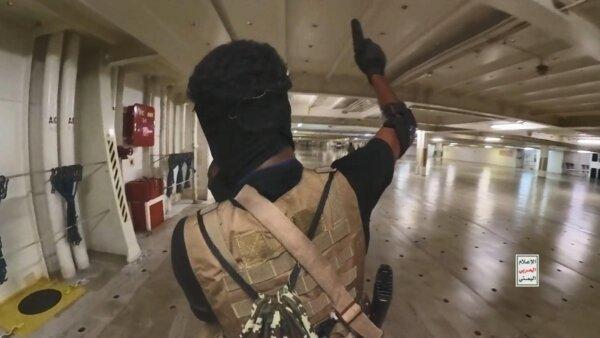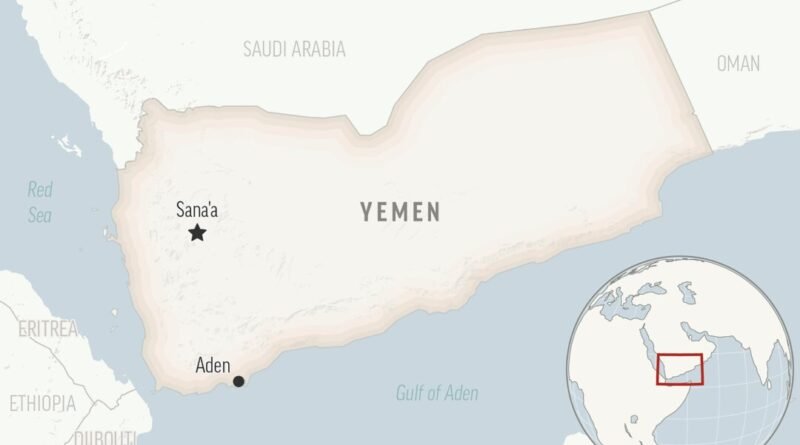Houthis in Yemen initiate their biggest ever drone and missile assault on the Red Sea
DUBAI, United Arab Emirates—Yemen’s Houthi rebels fired their largest-ever barrage of drones and missiles targeting shipping in the Red Sea, forcing the United States and British navies to shoot down the projectiles in a major naval engagement, authorities said Wednesday. No damage was immediately reported.
The attack by the Iranian-backed Houthis came despite a planned United Nations Security Council vote later Wednesday to potentially condemn and demand an immediate halt to the attacks by the rebels, who say their assaults are aimed at stopping Israel’s war on Hamas in the Gaza Strip.
However, their targets increasingly have little—or no—connection to Israel and imperil a crucial trade route linking Asia and the Middle East with Europe. That raises the risk of a U.S. retaliatory strike on Yemen that could upend an uneasy cease-fire that has held in the Arab world’s poorest country.
The assault happened off the Yemeni port cities of Hodeida and Mokha, according to the private intelligence firm Ambrey. In the Hodeida attack, Ambrey said ships described over radio seeing missiles and drones, with U.S.-allied warships in the area urging “vessels to proceed at maximum speed.”
Off Mokha, ships saw missiles fired, a drone in the air and small vessels trailing them, Ambrey said early Wednesday. The British military’s United Kingdom Marine Trade Operations also acknowledged the attack off Hodeida.
The U.S. military’s Central Command said the “complex attack” launched by the Houthis included bomb-carrying drones, anti-ship cruise missiles, and one anti-ship ballistic missile.
It said 18 drones, two cruise missiles and the anti-ship missile were downed by F-18s from the USS Dwight D. Eisenhower, as well as by American Arleigh Burke-class destroyers the USS Gravely, the USS Laboon and the USS Mason, as well as the United Kingdom’s HMS Diamond.
“This is the 26th Houthi attack on commercial shipping lanes in the Red Sea since Nov. 19,” Central Command said. “There were no injuries or damage reported.”
“Vessels are advised to transit with caution and report any suspicious activity,” the UKTMO added.

British Defense Secretary Grant Shapps described the assault as “the largest attack by the Iranian-backed Houthis in the Red Sea to date,” saying the Diamond used Sea Viper missiles and guns to shoot down multiple drones.
“The U.K. alongside allies have previously made clear that these illegal attacks are completely unacceptable and if continued the Houthis will bear the consequences,” Mr. Shapps said in a statement. “We will take the action needed to protect innocent lives and the global economy.”
The Houthis, a Shiite group that has held Yemen’s capital of Sanaa since 2014, later claimed responsibility for the attack in a televised statement by rebel spokesman Brig. Gen. Yahya Saree. Brig. Gen. Saree claimed the attack “targeted an American ship that was providing support to the Zionist entity,” without offering any further information. He also described it as an “initial response” to American troops sinking Houthi vessels and killing 10 rebel fighters last week.
The Houthis will “continue to prevent Israeli ships or those heading to the ports of occupied Palestine from navigating in the Red Sea until the aggression stops and the siege on our steadfast brothers in the Gaza Strip ends,” Brig. Gen. Saree said.
The Houthis say their attacks aim to end the pounding Israeli air-and-ground offensive targeting the Gaza Strip amid the ongoing Israel-Hamas war. However, the links to the ships targeted in the rebel assaults have grown more tenuous as the attacks continue.
The Red Sea links the Mideast and Asia to Europe via the Suez Canal, and its narrow Bab el-Mandeb Strait. The strait is only 29 kilometers (18 miles) wide at its narrowest point, limiting traffic to two channels for inbound and outbound shipments, according to the U.S. Energy Information Administration. Nearly 10 percent of all oil traded at sea passes through it and an estimated $1 trillion in goods pass through the strait annually.
A U.S-led coalition of nations has been patrolling the Red Sea to try and prevent the attacks. There’s been no broad retaliatory strike yet, despite warnings from the U.S. However, Tuesday’s attack appeared to be testing what response, if any, would come from Washington.
Meanwhile, a separate, tentative cease-fire between the Houthis and a Saudi-led coalition fighting on behalf of Yemen’s exiled government has held for months, despite the long civil war in Yemen. This has raised concerns that any wider conflict in the sea—or a potential reprisal strike from Western forces—could reignite those tensions in Yemen. It also may draw in Iran, which has so far largely avoided directly entering the wider Israel-Hamas war, further into the conflict.





